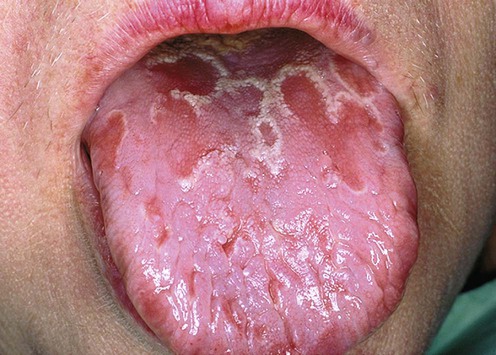Geographic tongue

(From Daniels, T.E., 2012. In: Goldman, L., Schafer, A.I. (Eds.), Goldman’s Cecil Medicine, 24th ed. Philadelphia, Saunders, pp. 2449–2454.)

(From Daniels, T.E., 2012. In: Goldman, L., Schafer, A.I. (Eds.), Goldman’s Cecil Medicine, 24th ed. Philadelphia, Saunders, pp. 2449–2454.)
